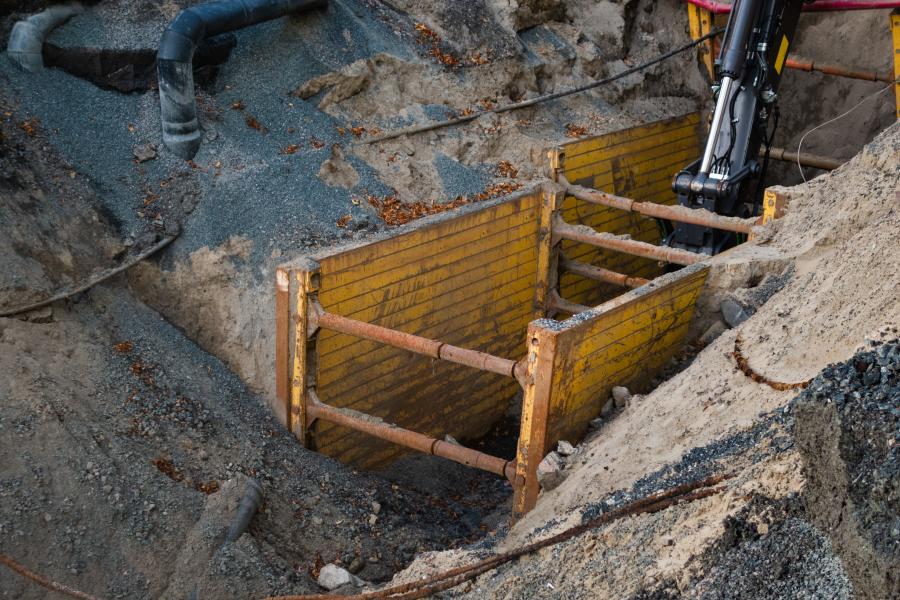Digging trenches are an essential element of various constructions. They are utilized for the construction of telephone lines, pipes or any other type of tubular structure that must be installed deep underground like oil rigs, oil pipelines, etc. Trenching can sometimes become very strenuous work as the soil that is found in these areas is characterized by significant levels of moisture, which can make it challenging not only to get rid of any dirt that is accumulated around objects but also keep yourself protected during this procedure as accidentally exposing your skin could result in serious injury.
Trench boxes are necessary for any type or repair that involves accessing the ground. They’re also used as protection against collapse, depending on soil quality and material thicknesses put in place with Trench boxes that are made of steel framing or aluminum to secure it temporarily before installation , while excavation is taking place over them. They are then completed by attaching grout between two layers to ensure that no cracks form when installed properly at site and could cause expansion as time passes due.

Pre Installation
Before digging is initiated, it is essential to assess the risks associated with the project. This involves knowing what equipment is needed and the number of people will have access. It also allows you to consider other ways of completing the task without risking your life. A thorough risk assessment must be conducted during the pre-excavation inspection to make sure that all dangers can be easily identified prior to excavation. This will help avoid any complications in the future.
The trench’s depth is an important factor to take into account as well. If you’re working with five feet of width, then support either from slope or shoring may be essential based on the size it is; however, the trench is 20 feet deep, it will require extra engineering design work because there aren’t straight sides on either side, it implies that any structure above the ground needs to be able to account for the increased risk of foundation movement due directly back down into their excavation site.
Access to the trench must be made by ladders or steps. In case emergencies the trench must have an accessible area of 25 feet or less. There may be a need to test the level of oxygen in the air as well as toxic gases in specially designed containers called “trench box”. The assembly of these articulated devices is easy, but they increase the chance of stacking them on top of each other because you don’t know how high your piles will extend to their vulnerable bottom.
Care care for the trench
1. In the event of any movement or damage, make sure you inspect the trench box every day.
2. On-site employees must be wearing protective gear and wear a steel-toed boot as well as high visibility clothing.
3. Tools and heavy equipment should be placed at least three feet away from the edge of any trench.
Extraction
Because the ground around trench boxes moves, it is more difficult to install than it is to extract it. To extract it, you could employ chain slings. A crane that is overhead is also an option.
1. Straight Pull: This is the most simple of extraction methods. Simply connect your sling to two points and lift out, without fumbling around by using too much force or unnecessary movement.
2. Half Pull: A half-pull can be used to secure the trench box to one side and lift the box as much as it is possible. You can remove dirt and debris from the trench without causing any damage.
3. Single Pull: You connect one end of chain to your extraction/lifting point. Each panel is lifted in turns. If it’s time to take it down though just use your trusty pull.
For more information, click trench shore
